
Gardening and Chickens Go Hand in Hand
WITHIN THE PAGES …
Lisa Steele has written two books on chickens published by Voyageur that could be good reads for you or a nice addition to the book offerings at your garden center.
“Gardening with Chickens: Plans and Plants for You and Your Hens”
 Welcome to a world where chickens and gardens coexist. This book takes a unique journey through the garden, starting with planning the garden and learning strategies and tips for keeping plants safe while they grow. Plant with purpose, choosing from a dozen plans for theme gardens filled with edibles for sharing with the family and feathered friends. Lisa’s friendly writing, together with inspirational photos and illustrations, will have readers rolling up their sleeves and reaching for gardening tools. Other topics covered include: Composting, plants to avoid, how to harvest herbs, using chickens to aerate, till and fertilize. Whether an experienced chicken keeper, master gardener or just getting into these two hobbies, “Gardening with Chickens” is a guide for a harmonious homestead.
Welcome to a world where chickens and gardens coexist. This book takes a unique journey through the garden, starting with planning the garden and learning strategies and tips for keeping plants safe while they grow. Plant with purpose, choosing from a dozen plans for theme gardens filled with edibles for sharing with the family and feathered friends. Lisa’s friendly writing, together with inspirational photos and illustrations, will have readers rolling up their sleeves and reaching for gardening tools. Other topics covered include: Composting, plants to avoid, how to harvest herbs, using chickens to aerate, till and fertilize. Whether an experienced chicken keeper, master gardener or just getting into these two hobbies, “Gardening with Chickens” is a guide for a harmonious homestead.
“101 Chicken Keeping Hacks from Fresh Eggs Daily”
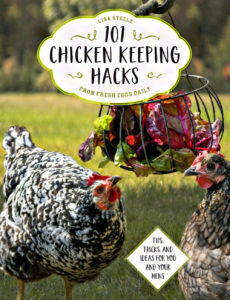 Spoil chickens and beautify the coop. This book provides a behind- the-coop tour like you’ve never seen. Lisa has spent years figuring out the best ways to keep chickens healthy, the natural way, and she’s collected more than just your average tips for the coop, home and garden. Simple ideas for re-using and upcycling old items, as well as detailed information on using natural ingredients to enhance and improve chickens’ lives without breaking the bank. Topics include making homemade scratch grains and frozen treats, growing fodder, making a chicken swing, herb drying rack and DIY scarecrow, brewing homemade salves, herbal teas and coop cleaners as well as chicken poop “tea.”
Spoil chickens and beautify the coop. This book provides a behind- the-coop tour like you’ve never seen. Lisa has spent years figuring out the best ways to keep chickens healthy, the natural way, and she’s collected more than just your average tips for the coop, home and garden. Simple ideas for re-using and upcycling old items, as well as detailed information on using natural ingredients to enhance and improve chickens’ lives without breaking the bank. Topics include making homemade scratch grains and frozen treats, growing fodder, making a chicken swing, herb drying rack and DIY scarecrow, brewing homemade salves, herbal teas and coop cleaners as well as chicken poop “tea.”
Backyard chickens and gardening go hand in hand. Both play such an important role in being more self-sufficient and helping feed a family with what can be produced on someone’s own land with their own two hands — and each complements the other beautifully.
A garden can provide chickens with lots of nutritious, inexpensive treats to supplement their regular feed and save money on chicken feed in the process, while the chickens’ activities in the garden can help it to thrive, providing family with nutritious, inexpensive produce.
Chickens — the world’s first and least expensive, environment- friendly tillers, pest-control and fertilizers — instinctively love scratching for bugs, loosening dirt and eating weeds; not to mention providing free manure to nourish garden soil.
Getting Started
Whether your customers live on a postage stamp-sized lot or several acres, they can still make a difference in their family’s health, lifestyle and well-being by adding a few chickens to their backyards. Five or six chickens don’t need much more room than does a large dog, and don’t require much more in the way of care either.
The chickens will need to be let out of their coop each morning, fed and watered, then eggs need to be collected at least once a day. The chickens will return to their coop at dusk on their own and locked up to keep them safe from predators. And that’s about it.
Of course, baby chicks need a bit more attention, like any baby. They need 24/7 feed and water, heat and a safe place to grow up. A mudroom, laundry room or garage makes a perfect brooding area for the little ones until they are big enough to go outside — usually around six to eight weeks old.
Getting chicks in the spring ensures fresh eggs by fall (most chickens start laying eggs anywhere between 20 to 24 weeks old).
The one downside to raising chickens is they are not too discriminatory when it comes to what they are going to eat, where they scratch, or where they decide to take a dust bath.
One of the questions I get most frequently from my readers, and I assume you get asked a lot from customers, is “How do I get my chickens to stop destroying my lawn (garden/landscaping/ flower beds)?”
Chickens can certainly be destructive in a garden (or a lawn for that matter). In addition to pests, a fluffy band of marauders will also gobble down every earthworm they find, along with small snakes and lizards, toads and other beneficial garden insects.
They’ll just as gladly eat your seedlings as weed seeds, and will happily pluck every vegetable off the vine, then eat the vines and stems as well. They’ll scratch up newly planted petunias, munch all the petals off your rose bushes and kick all the mulch out flower beds. But with some planning and fencing, it’s very easy to incorporate chickens into a gardening routine.
The simplest answer is to pen up the chickens or fence in the garden, but there’s a far better solution than that. With some proper preparation and a thoughtful setup, it’s possible for chickens and gardens to live in peace … and to benefit each other as well.
Year-Round Benefits
The key to incorporating chickens into a backyard is supervised free ranging. Both to keep them safe from predators and to keep the lawn and garden safe from the chickens, allowing them access to the garden during only specific times of year works best.
During the off season, using chickens to turn over the garden plot, loosen the soil, dig up any weeds and bugs and spread any debris is very helpful. Early in the spring, letting your chickens help to till the soil and loosen it up while they look for weeds, bugs and other goodies in the dirt is beneficial and will save work. In the summer while crops are growing, it’s best to limit their access, but thinned seedlings, weeds, bug- eaten produce and any tops or trimmings will make great chicken treats.
Come fall, once the last of the garden crops is harvested, it’s the perfect time to think about letting the chickens back in to the garden area. They will gladly help to break up and spread any remaining stalks and stems. They’ll seek out insects that had planned on overwintering in your garden, leading to less trouble with pests come spring. They’ll also deposit manure as they wander, adding nutrients to the soil.
Then come spring, it’s time to put the chickens to work again!
Building a Sustainable Coop and Garden
Chickens will happily eat nearly anything grown in the garden (the exceptions being white potatoes, unripe tomatoes, rhubarb and onions, all of which can be toxic to them in large enough quantities),
as well as all kinds of kitchen scraps, peels, stems and stalks. In return, they’ll lay fresh eggs (about one a day per hen) and provide as much free nitrogen- rich fertilizer as you can use.
Manure needs to be composted or left to age for several months to ensure any pathogens have died off and to allow the nitrogen levels to drop so as not to burn your plants, but along with their feces, the straw and feathers that will need to be cleaned out of the chicken coop on a regular basis also make wonderful mulch or compost for the gardens.
Doing a fall coop cleaning and spreading the straw bedding over the garden before winter allows all that nitrogen- rich manure time to age and decompose to be ready for spring planting.
Protecting prized flowers and bushes from the chickens usually requires caging them until they are established. Of course, the larger the property and the more landscaping, the longer it will take chickens to ravage it.
But just a few chickens in a suburban backyard are manageable as long as their energy is directed toward being helpful in the garden and not destructive.
Scattering sunflower seeds or other treats over an empty garden plot can encourage chickens to start scratching. And unlike a traditional tiller which can damage soil structure over time, chickens only turn over the top few inches of soil, which is far gentler. They also seek out any insects and eat errant weed seeds.
Chickens will eat ticks, grubs, slugs and mosquito larvae. By letting a few chickens loose in your yard, they’ll likely be fewer ticks on both people and cats and dogs, as well as fewer mosquitoes buzzing around.
Gardens and backyard chickens can coexist in harmony; it’s just a matter
of seasonal planning. By thoughtfully planning out your garden and chicken coop, you can make it work. You’ll find that your garden and chickens will actually benefit each other. And your family will benefit as well, with delicious eggs, a bountiful harvest, and savings in time, energy and money, as well as the time spent outdoors.
Studies have been done to show that time spent outside getting dirty not only is good for your health, both physical and mental, but also contributes to a stronger immune system.
Chickens are incredibly friendly and affectionate and will provide hours of entertainment as they wriggle in the dirt, chase butterflies and wander around the yard, softly clucking to each other.
Just remember don’t recommend using any chemical herbicides, pesticides or fertilizers on the lawn, flowers, landscaping or garden that the chickens
have access to. Since they’ll be eating the grass and plants, the chemicals aren’t good for them. But to make up for that, the chickens are helping with weed and insect control.
If your customers are already coming to you for their plants and garden and spending lots of time outside anyway, why not help them add a few chickens to their backyards? And if they already raise chickens, planting and maintaining a few gardens just gives them more of an excuse to spend time outdoors with their chickens!

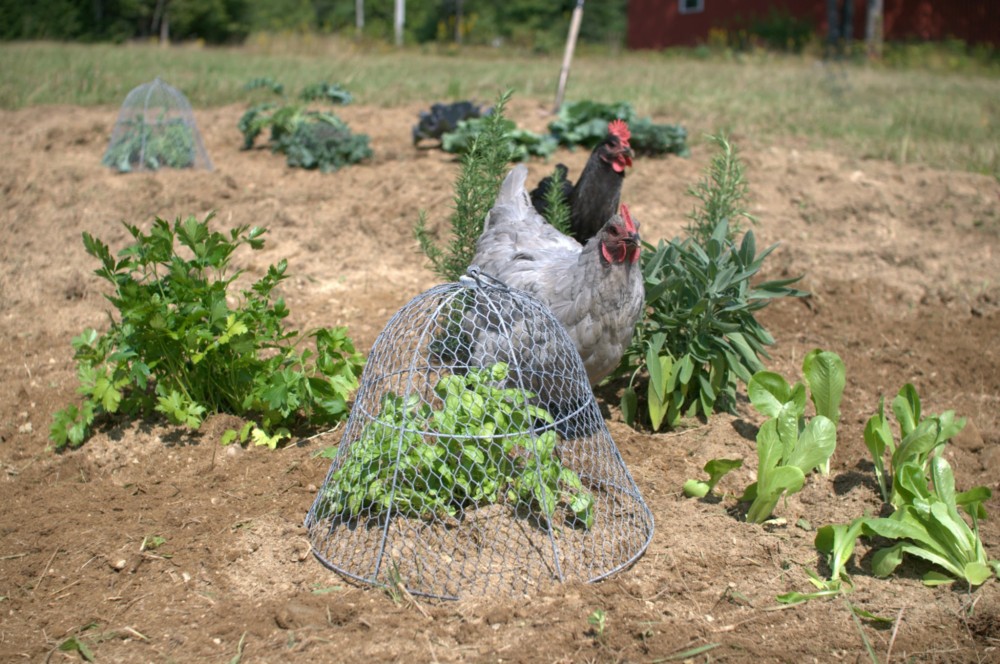

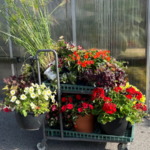






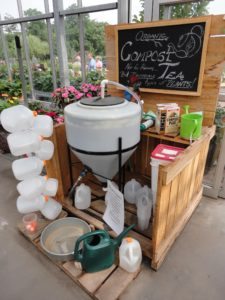
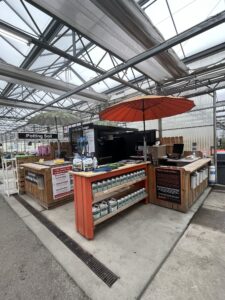


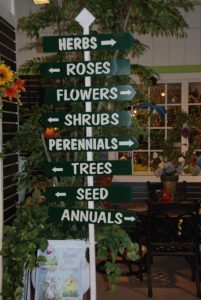

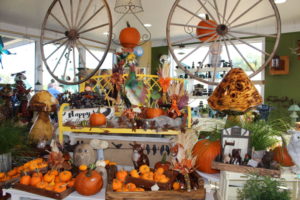


 Videos
Videos





